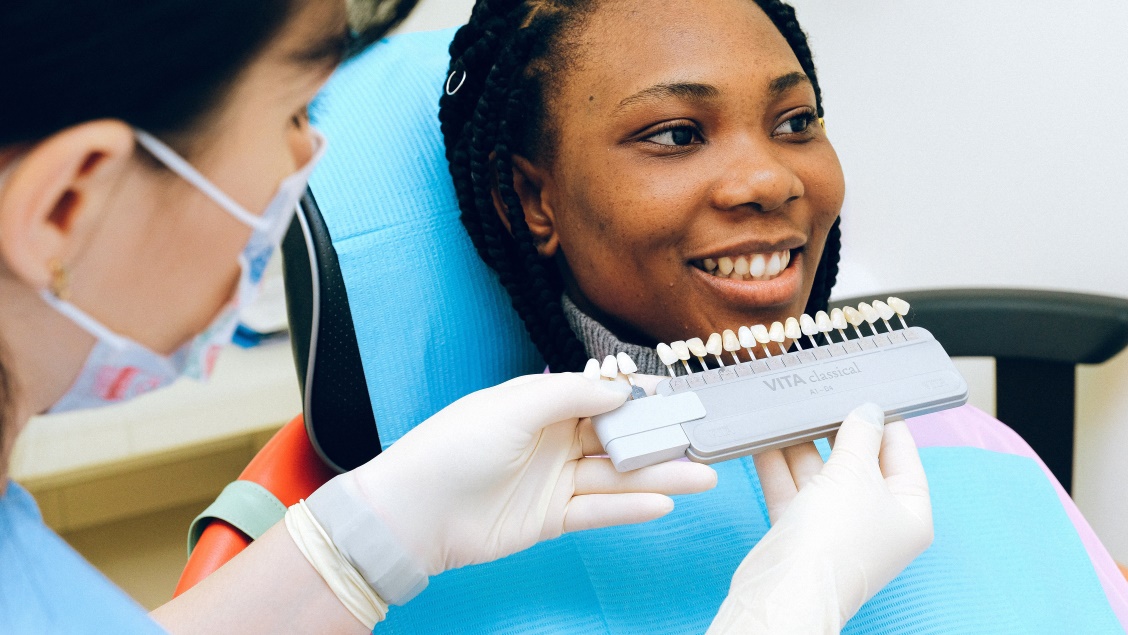
The Search for Teeth Whitening Techniques
Open science can improve the safety and effectiveness of cosmetic treatments, including teeth whitening.
Let’s take a look at some relevant MDPI research and how it’s improving our smiles.
Teeth whitening methods
Many different substances can whiten teeth, but not all are suitable and safe. MDPI research studies describe the advantages and disadvantages of several different teeth whitening methods. Read about them below.
Hydrogen peroxide
Many know hydrogen peroxide for its ability to bleach hair, but it can also bleach teeth.
In fact, it’s the most common teeth whitening method used by dentists.
It works using the process of oxidation, through either the addition of oxygen or the removal of hydrogen. Other examples of oxidation include rusting and apple browning.
Hydrogen peroxide is strong by nature. This is shown in a study published in Applied Sciences, wherein hydrogen peroxide was proven to be effective at various concentrations (35%, 37.5%, 38%, and 40%). The percentage change in these concentrations made little to no difference to the effectiveness.
Hydroxyapatite
The use of hydroxyapatite is a new teeth whitening method that has not been extensively explored.
This mineral is actually already present in our teeth. It’s part of the enamel, the smooth coating on our teeth.
Applying hydroxyapatite to the teeth creates another, man-made layer of enamel. The result is a white vinyl-like coating, making the teeth appear artificially white.
It can also be used in conjunction with bleaching agents such as hydrogen peroxide. Bleaching agents typically increase sensitivity and wear down enamel. However, hydroxyapatite can negate this by filling the pores in the enamel, protecting them from exposure.
A review in Dentistry Journal discusses hydroxyapatite’s ability to whiten teeth. It found that it’s safe and effective, both in the short and long term. However, its use involves keeping up a healthy dental regimen, including ensuring little to no abrasion and regularly removing plaque.
Carbamide peroxide
Hydrogen peroxide can also be combined with carbamide (known as urea) to form a crystalline solid.
The practical difference is that carbamide peroxide takes longer to act. While hydrogen peroxide acts within 60 minutes, carbamide peroxide can take 4 hours. It’s therefore often applied and left on overnight.
It’s also safer to use on a regular basis.
In a Materials research study, the authors applied a 22% carbamide peroxide solution to model teeth, every day for one hour. But after 28 days it did start to degrade the enamel.
The authors explain that this could be a suitable at-home teeth whitening option if its use is supervised.
When an acidic drink was added, the enamel broke down to a large extent. This reveals the limits of this substance and the danger of combining treatment with a poor diet.
Hollow calcium phosphate spheres
Another study reveals that adding carbamide peroxide to hollow calcium phosphate spheres could prolong its whitening effects.
These spheres are made up of calcium phosphate, a white solid that is actually also part of tooth enamel. It’s a part of hydroxyapatite, another tooth whitening method mentioned above.
Activated charcoal
A form of carbon, activated charcoal is abrasive and can absorb stains on the surfaces of the teeth.
However, one study looked at activated charcoal combined with carbamide peroxide.
Compared to just carbamide peroxide on its own, the charcoal combination increased the roughness of the enamel. This is not a good thing. Rough tooth surfaces lead to more space for plaque to build up.
Activated charcoal may be too strong to use on teeth on an ongoing basis. More research is required to explore the full extent of this.
Teeth whitening using homemade gels
New experimental gels can improve teeth whitening outcomes via their protective qualities.
For example, a group of researchers collaborating in Romania discovered that a gel made with green tea could improve teeth whitening procedures.
They discovered that the green tea was effective in protecting the mouth against two strains of bacteria, while still maintaining the same surface roughness.
Which teeth whitening procedure is best?
Thanks to the popularity of teeth whitening procedures, new and improved substances for safely whitening teeth are being discovered all the time.
It’s unclear which is best for a nice white smile. The above research indicates the advantages of certain substances, but the best approach is a holistic one.
A dental professional can review a patient’s individual case and decide what’s best for them. A variety of conditions, from staining to hypersensitivity to plaque build-up, may dictate which whitening technique is used.
However, as more research is conducted and shared in open access, governments can review new substances as they come up, and approve them for use.










